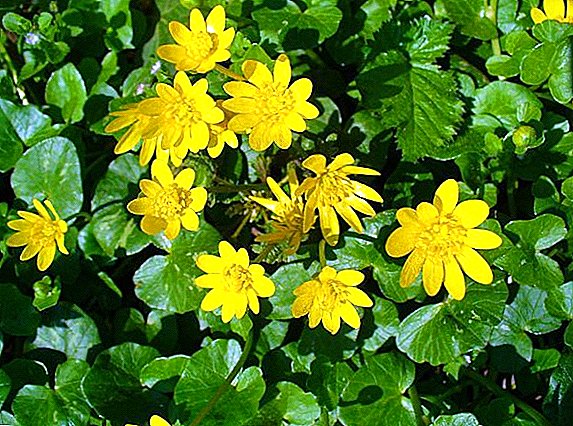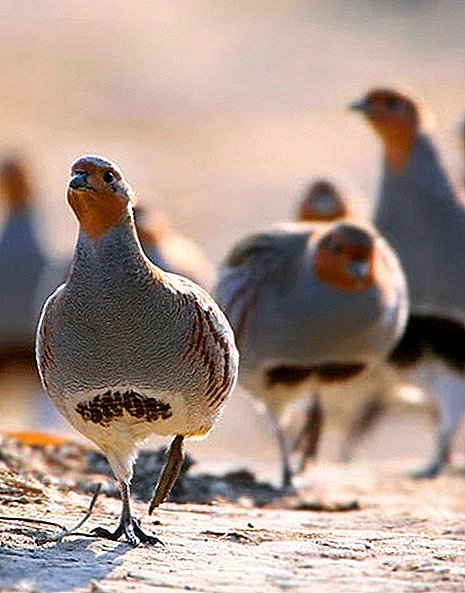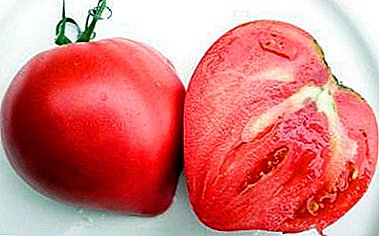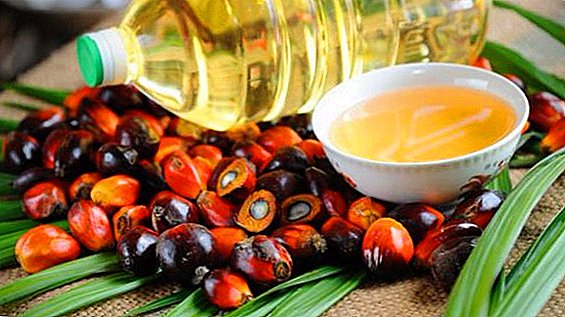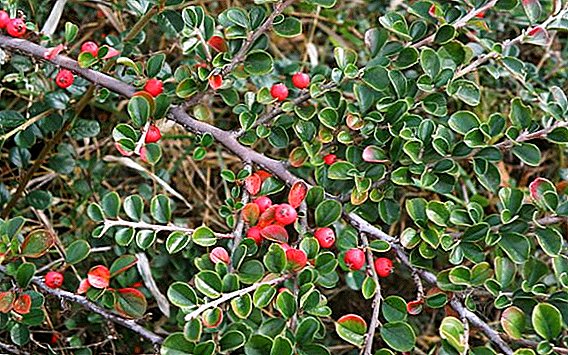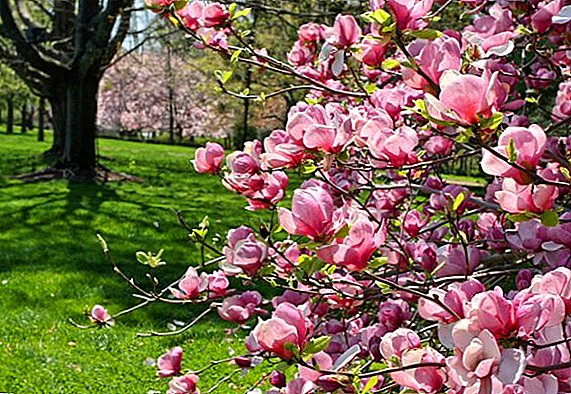 Genus Magnolia (from the Latin. Magnolia) - the oldest genus of flowering plants. It belongs to the numerous (more than 120 species) Magnolia family, some of which are frost-resistant, growing in regions with a temperate climate.
Genus Magnolia (from the Latin. Magnolia) - the oldest genus of flowering plants. It belongs to the numerous (more than 120 species) Magnolia family, some of which are frost-resistant, growing in regions with a temperate climate.
Did you know? This kind of genus was due to Charles Plumier, who named it in honor of the French botanist Pierre Magnol.
Magnolia is found in the wild, different varieties grow in forests with a tropical and temperate climate. They can be found along the banks of the Himalayan rivers, Japan, Malaysia, as well as from the southeastern states of the United States to Brazil. Unfortunately, at the moment more than 40 species are on the verge of extinction.
Different varieties of magnolias look completely different, but they all serve as a great decoration for your garden. Consider the most popular varieties and types of magnolia, so that you can decide which type is best for your garden.
Magnolia pointed (cucumber)
Homeland: Central North America.  In nature, it grows at the foot of the mountains, as part of deciduous forests, as well as along the slopes and rocky shores of mountain rivers. It is a deciduous tree. Slender pyramidal crown becomes rounded with age. It grows up to 30 m in height. The leaves are oval or elliptical in shape. Flowers - the form of bluebells, grow up to 8 cm in diameter, yellowish-green with a bluish bloom. Begins to bloom after the leaves bloom, the flowers have no smell. It grows quite quickly, resistant to frost. The fruits are red-crimson.
In nature, it grows at the foot of the mountains, as part of deciduous forests, as well as along the slopes and rocky shores of mountain rivers. It is a deciduous tree. Slender pyramidal crown becomes rounded with age. It grows up to 30 m in height. The leaves are oval or elliptical in shape. Flowers - the form of bluebells, grow up to 8 cm in diameter, yellowish-green with a bluish bloom. Begins to bloom after the leaves bloom, the flowers have no smell. It grows quite quickly, resistant to frost. The fruits are red-crimson.
Siebold magnolia
Homeland: Korean Peninsula, China, Japan.  Siebold magnolia is a tall shrub, sometimes the description says that it is a small deciduous tree (up to 10 m). The leaves have a broadly elliptical shape. Flowers bloom in June immediately after the leaves. Cup-shaped, white, with a pleasant aroma. The flowers are arranged singly on a thin drooping pedicle with a fluff. This type of magnolia is considered one of the most cold-resistant.
Siebold magnolia is a tall shrub, sometimes the description says that it is a small deciduous tree (up to 10 m). The leaves have a broadly elliptical shape. Flowers bloom in June immediately after the leaves. Cup-shaped, white, with a pleasant aroma. The flowers are arranged singly on a thin drooping pedicle with a fluff. This type of magnolia is considered one of the most cold-resistant.
Important! Adult plants can tolerate frosts down to minus 36 ° C without damage.
Magnolia Kobus
Homeland: Japan, Korea.  A small deciduous tree or large shrub. In youth, it has a cone-shaped shape, with age, the main branches become wide-spreading, and the crown - wide-round. Magnolia Kobus grows to a height of 10 m in height, it can be from 4 to 8 m wide. Leaves have an obovate form and are arranged alternately. It blooms very abundantly from about mid-April to the first week of May. The fruits are boxes of a reddish cylindrical shape. Treats frost-resistant types, but badly transfers late frosts.
A small deciduous tree or large shrub. In youth, it has a cone-shaped shape, with age, the main branches become wide-spreading, and the crown - wide-round. Magnolia Kobus grows to a height of 10 m in height, it can be from 4 to 8 m wide. Leaves have an obovate form and are arranged alternately. It blooms very abundantly from about mid-April to the first week of May. The fruits are boxes of a reddish cylindrical shape. Treats frost-resistant types, but badly transfers late frosts.
Magnolia Lebner
Homeland: obtained by crossing varieties.  Magnolia Lebner obtained by crossing star magnolia and Kobus magnolia. It has the shape of a bush with a height of 4-6 meters or a tree with a height of up to 8 meters. The crown of this variety is spreading, as well as in the species from which it was obtained. The leaves have an obovate or oblong-oval shape. Flowers at the beginning of flowering goblet-shaped, and after fully open are arranged radially. The diameter of the flower reaches 10-12 cm, it has a pleasant smell, and the color, like that of the parent species, is white.
Magnolia Lebner obtained by crossing star magnolia and Kobus magnolia. It has the shape of a bush with a height of 4-6 meters or a tree with a height of up to 8 meters. The crown of this variety is spreading, as well as in the species from which it was obtained. The leaves have an obovate or oblong-oval shape. Flowers at the beginning of flowering goblet-shaped, and after fully open are arranged radially. The diameter of the flower reaches 10-12 cm, it has a pleasant smell, and the color, like that of the parent species, is white.
Petals on each flower are formed up to 12 pieces, they have an obovate (slightly elongated) shape, while still tapering towards the base. Flowering begins even before the leaves - the end of April - the beginning of May. Fruits appear in the second half of September. It tolerates frost well.
Star magnolia
Homeland: Japan.  The star-shaped magnolia is a dense, wide-spreading shrub. It has a rounded shape, grows up to three meters in height and in width. It grows slowly. The leaves have an obovate or elliptical shape, arranged alternately. Begins to bloom before leafing, in March-April. The petals are sharp at the ends, their number on one flower can reach 40, outwardly resembling a star. The flowers are white, have a pleasant aroma. This species also applies to frost.
The star-shaped magnolia is a dense, wide-spreading shrub. It has a rounded shape, grows up to three meters in height and in width. It grows slowly. The leaves have an obovate or elliptical shape, arranged alternately. Begins to bloom before leafing, in March-April. The petals are sharp at the ends, their number on one flower can reach 40, outwardly resembling a star. The flowers are white, have a pleasant aroma. This species also applies to frost.
Magnolia Large Leaf
Homeland: North America.  Deciduous tree of medium size. During the first 15 to 20 years, the crown has a rounded shape, but with age it becomes more irregular. The trunk is almost always straight, occasionally branching at the base. The leaves have a complex shape and have impressive size - up to 1 m in length. They are quite heavy, but at the same time thin, with wavy edges, blunted at the ends. The base of them is heart-shaped, on top of a dark green shiny color, smooth. The bottom color is bluish and has a thin layer of “gun”. A characteristic feature of the flowers are the three purple spots on the inner petals. The flowers have a fragrant and large size. Their color at the beginning of flowering is creamy-white, and over time they get a shade of ivory. Flowering period: end of April - May.
Deciduous tree of medium size. During the first 15 to 20 years, the crown has a rounded shape, but with age it becomes more irregular. The trunk is almost always straight, occasionally branching at the base. The leaves have a complex shape and have impressive size - up to 1 m in length. They are quite heavy, but at the same time thin, with wavy edges, blunted at the ends. The base of them is heart-shaped, on top of a dark green shiny color, smooth. The bottom color is bluish and has a thin layer of “gun”. A characteristic feature of the flowers are the three purple spots on the inner petals. The flowers have a fragrant and large size. Their color at the beginning of flowering is creamy-white, and over time they get a shade of ivory. Flowering period: end of April - May.
Magnolia grandiflora
Homeland: Southeast USA.  Representative of evergreen magnolia species. The height can reach 30 meters. Leaves ovate, large. The fruits of this species are the pineal polyleaf, inside which are bright red seeds.
Representative of evergreen magnolia species. The height can reach 30 meters. Leaves ovate, large. The fruits of this species are the pineal polyleaf, inside which are bright red seeds.
Seeds of this species do not immediately fall from a cracked fruit: they hang on pedicels, the appearance resembling a Christmas decoration. The flowers of this type of magnolia are white or cream-colored, very large in size. Have a pleasant fragrant smell, and bloom lasts all summer.
Magnolia officinalis
Homeland: China.  Magnolia officinalis also refers to evergreen magnolia. Leathery leaves have an elliptical shape. In height, this tree reaches 20 meters. Due to the dense pubescence of the leaves are reddish-brown. They are arranged alternately, and their length reaches 25 cm. Flowering period: May-June. Flowers in color, shape and smell are very similar to large-flowered magnolia.
Magnolia officinalis also refers to evergreen magnolia. Leathery leaves have an elliptical shape. In height, this tree reaches 20 meters. Due to the dense pubescence of the leaves are reddish-brown. They are arranged alternately, and their length reaches 25 cm. Flowering period: May-June. Flowers in color, shape and smell are very similar to large-flowered magnolia.
Did you know? Medicinal magnolia has been used in traditional Chinese medicine for over 2000 years.
Magnolia Nude
Homeland: China.  A pyramidal tree, sometimes a shrub. It grows to a height of 8-10 meters. The leaves have an obovate shape, and their length reaches 15 cm. The flowers are of an unusual milky-white color, very fragrant. In form resemble lily.
A pyramidal tree, sometimes a shrub. It grows to a height of 8-10 meters. The leaves have an obovate shape, and their length reaches 15 cm. The flowers are of an unusual milky-white color, very fragrant. In form resemble lily.
Duration of flowering is only 10-12 days, begins in April or early May. In October, the nude magnolia begins to bear fruit, its fruits are 5-7 cm long, red in color, the illuminated side is covered with white dots.
Magnolia umbrella
Homeland: northeastern America.  This magnolia has another name - threefold. Tree up to 5-6 meters. This species received its characteristic names due to the leaves, which are gathered in three at the ends of the shoots, thus forming a kind of umbrella. Leaves are obovate or oblong in shape. The flowers are creamy white, large, up to 25 cm in diameter. Unlike other varieties, umbrella magnolia flowers have an unpleasant odor. Flowering period: the end of May - the beginning of June. Duration - up to 20 days. The fruits are in the form of bright crimson cones, which begin to bear fruit at the end of September.
This magnolia has another name - threefold. Tree up to 5-6 meters. This species received its characteristic names due to the leaves, which are gathered in three at the ends of the shoots, thus forming a kind of umbrella. Leaves are obovate or oblong in shape. The flowers are creamy white, large, up to 25 cm in diameter. Unlike other varieties, umbrella magnolia flowers have an unpleasant odor. Flowering period: the end of May - the beginning of June. Duration - up to 20 days. The fruits are in the form of bright crimson cones, which begin to bear fruit at the end of September.
Magnolia Sulange
Homeland: South and North America.  Deciduous tree with a short trunk or large shrub. The crown pyramid in youth, with age becomes more rounded. The branches are loose and shirokoraskidistye, hang down to the ground and look very original. It grows about the same in width and height - up to 4-8 meters. Leaves broadly or obovate. Flowering begins before the leaves bloom. The flowers are shaped like white tulips with purple-pink spots. Flowering time: April - May. The fruits are cylindrical in red. Magnolia Sulanzha cold-resistant, but the flowers may suffer from late frosts, but the description may vary depending on the variety.
Deciduous tree with a short trunk or large shrub. The crown pyramid in youth, with age becomes more rounded. The branches are loose and shirokoraskidistye, hang down to the ground and look very original. It grows about the same in width and height - up to 4-8 meters. Leaves broadly or obovate. Flowering begins before the leaves bloom. The flowers are shaped like white tulips with purple-pink spots. Flowering time: April - May. The fruits are cylindrical in red. Magnolia Sulanzha cold-resistant, but the flowers may suffer from late frosts, but the description may vary depending on the variety.
As you can see, some types of magnolia are similar to each other, and some have cardinal differences. Each magnolia has many varieties, intended for cultivation in different conditions, so what kind of species will grow in your garden, depends on you.


